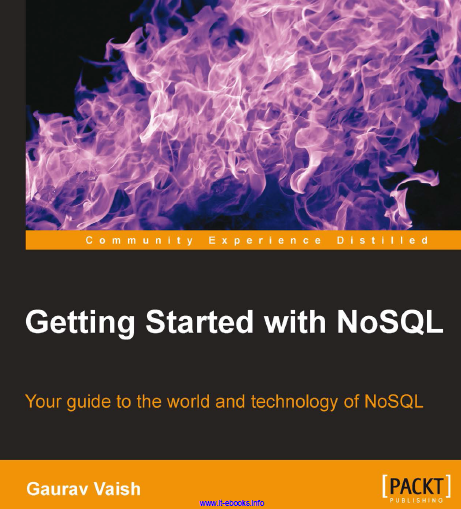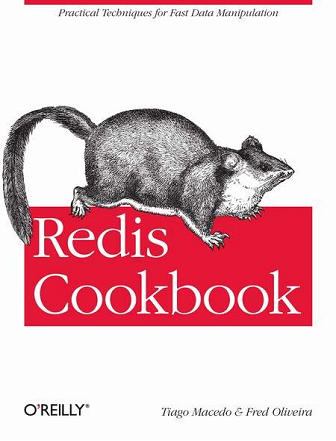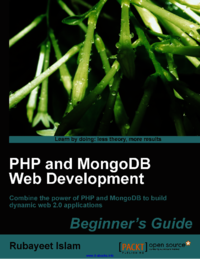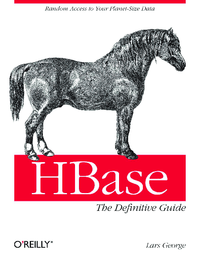Etiqueta "NoSQL"
Se han encontrado 4 Coincidencias
Getting Started with NoSQL
Your guide to the world and technology of NoSQL
152 Visitas | 204 Descargas | 2013-09-16 15:29:46 | jgramos
Relational databases have been used for decades, and in the last few years NoSQL has been a growing choice for large-scale web applications. Non-relational databases provide the scale and speed that you may need for your application. To switch you must know the options available, the advantages and drawbacks, and scenarios which it is suited to the most and where it should be avoided at all costs. Getting Started with NoSQL is a from-the-ground up guide that takes you from the very first steps to a real-world NoSQL application. It provides you with a step-by-step approach to design and implement a NoSQL application that will help you make clear decisions on database choices and database model choices. The book is suited for a developer, an architect, as well as a CTO.

Redis Cookbook
80 Visitas | 132 Descargas | 2013-09-26 15:30:04 | jgramos
Redis is a data structure server with an in-memory dataset for speed. It is called a data structure server and not simply a key value store because Redis implements data structures allowing keys to contain binary safe strings, hashes, sets and sorted sets, as well as lists. This combination of flexibility and speed makes Redis the ideal tool for many applications. Redis first started in early 2009 as a key value store developed by Salvatore Sanfilippo in order to improve the performance of his own LLOOGG, an analytics product. Redis grew in popularity after getting support from people and companies in the developer world and has since been supported by VMware, who hired Salvatore and Pieter Noordhuis to work full-time on the project.

PHP and MongoDB Web Development
232 Visitas | 726 Descargas | 2013-09-26 15:26:24 | jgramos
MongoDB is an open source, non-relational database system designed to meet the needs of modern Web 2.0 applications. It is currently being used by some of the most popular websites in the world. This book introduces MongoDB to the web developer who has some background building web applications using PHP. This book teaches what MongoDB is, how it is different from relational database management systems, and when and why developers should use it instead of a relational database for storing data.

HBase : The Definitive Guide
93 Visitas | 134 Descargas | 2013-09-26 15:59:31 | jgramos
You may be reading this book for many reasons. It could be because you heard all about Hadoopand what it can do to crunch petabytes of data in a reasonable amount of time. While reading into Hadoop you found that, for random access to the accumulated data, there is something called HBase. Or it was the hype that is prevalent these days addressing a new kind of data storage architecture. It strives to solve large-scale data problems where traditional solutions may be either too involved or cost-prohibitive. A common term used in this area is NoSQL.
Contribuir
Usted puede contribuir con Libros UCLV, es importante para nosotros su aporte..
Contribuir